#phoenician princess
Photo
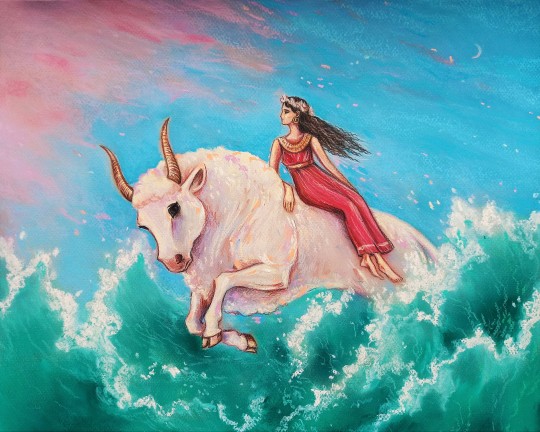
The rape of Europa (2020/2021)
Zeus, turned into a white bull, kidnapped the Phoenician princess Europa and took her to Crete.
#europa#bull#zeus#europa and zeus#sea#phoenician#phoenician princess#rapeofeuropa#white bull#marysmirages#art#illustration#painting#ancient greek mythology#drawing#creta
202 notes
·
View notes
Text

The Abduction of Europa by Jean-François de Troy
#jean françois de troy#art#europa#zeus#crete#greek mythology#princess#phoenician#tyre#folk tales#folklore#mythology#europe#european#mediterranean#ancient greek#ancient greece#mythological#bull#cretan#gods#classical antiquity#tales#ancient#religion#religious#sea
90 notes
·
View notes
Text
Jezabel/Jezebel





#history#Jezabel#Jezebel#Serie#women in the bible#Women#mujeres de la historia#Mujeres en la biblia#phoenicians#Phoenician women#Princess#Reina#Queen#Lidi lisboa#serie brasileira#brazilian serie#brazilian actress#Brazil#Brasil#Wife of king Acabe#🐍🥀❤️🔥👑
23 notes
·
View notes
Photo


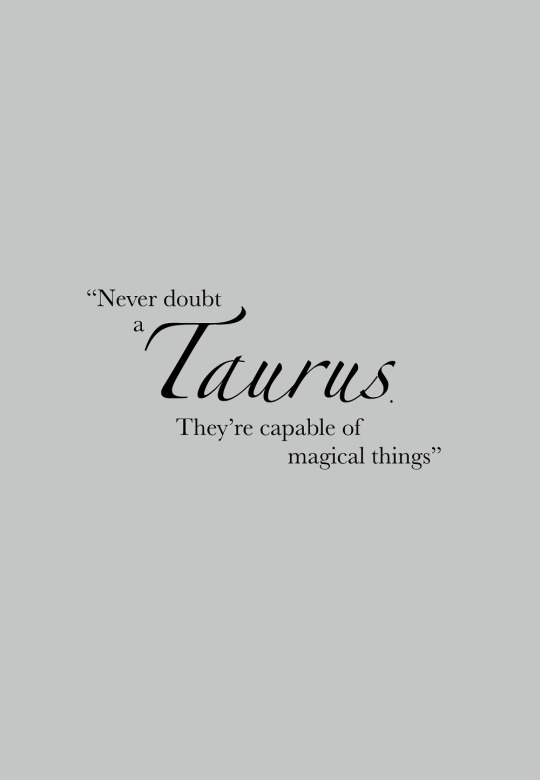

The Evermore Grimoire: Astrology
Taurus (April 20th to May 20th) is the second astrological sign in the zodiac. In Greek Mythology the constellation Taurus commemorates Zeus (king of the gods), who changed himself into a beautiful white bull to win the affections of the Phoenician princess Europa. The princess was awestruck by the bull and walked over to pet it. She then climbed upon his back at which Zeus jumped into the water and carried her across the sea to Crete. He took the form of an eagle there and ravished her. Traits associated with Taurus also include being smart, ambitious and trustworthy. They also value honesty above all else and are proud that their personal relationships tend to be drama free. Bulls get the reputation of being stubborn, but they're not always stuck in their ways. They’re also willing to see another point of view, but they won't flip-flop on an opinion just to make someone else happy. Taureans will shift their thinking only if they truly have a change of heart. Whilst they have an intense internal drive, they sometimes have trouble respecting authority, especially if asked to do something they think is pointless or should be done differently. Learning to be flexible and go with the flow can be an advantage to Taurus. However when it comes to friendship, once you're in with a bull, you're in for life. Taureans aren't just loyal, they're also fun, with a witty streak that always keeps you laughing. They don't take friendship lightly, and always remember birthdays, anniversaries, and other key events, often with a card or gifts.
artwork by Yaroslava Apollonova
606 notes
·
View notes
Text
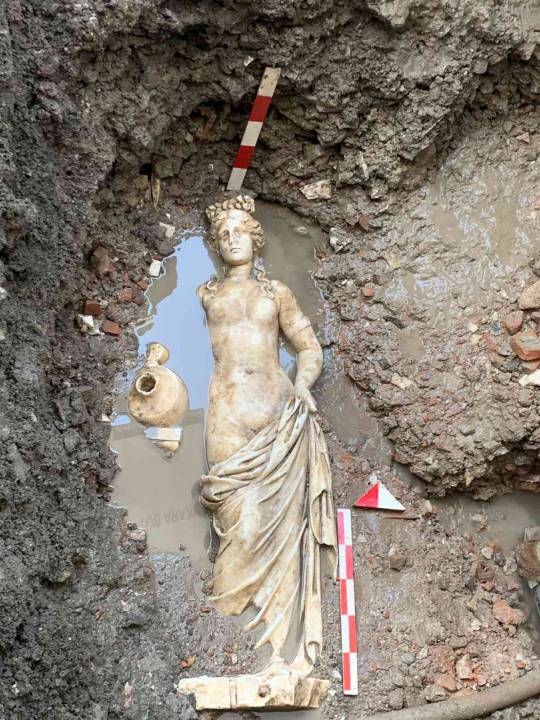
Ancient Roman Marble Statue Depicting a Nymph Found in Turkey
Excavations in the ancient city of Amastris, located in the Black Sea province of Bartın’s Amasra district, have unearthed a statue of a nymph thought to be 1800 years old. The artifact is set to be exhibited in the Amasra Museum soon.
Amasra’s coast was host to the Phoenician colony, Sesamus, in the 12th century B.C. The colony’s heyday was during the rule of Iranian Princess Amastris. It was among the most important of the Byzantine fortress harbors on the south shore of the Black Sea.
The site of the excavation was donated to the Ministry of National Education in 2014 and construction started for the building of a school on the land in 2017 when some remains believed to belong to the Roman period were discovered, upon which the construction works were stopped and the area was taken under protection.
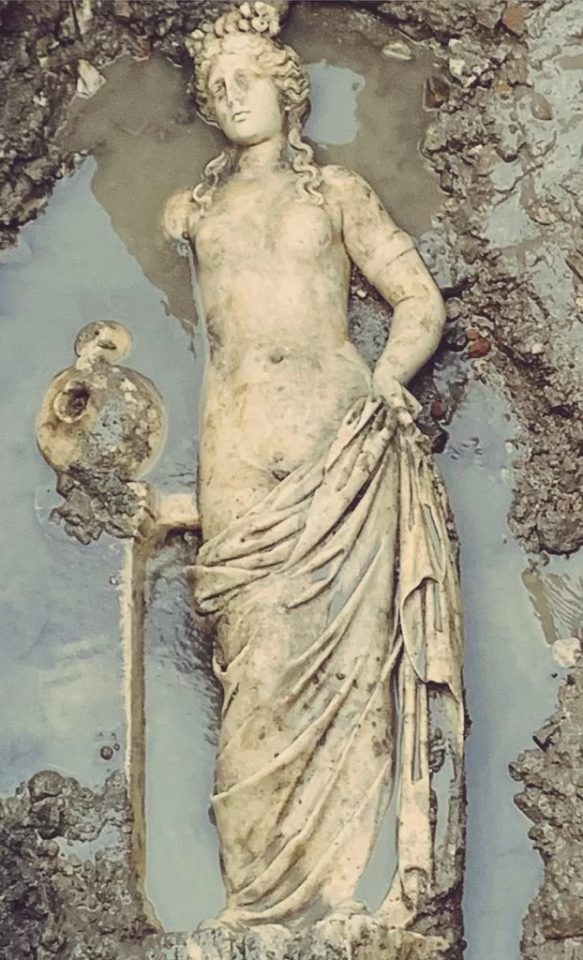
Excavations are carried out under the direction of the Amasra Museum Directorate and the scientific consultancy of Bartın University.
During the excavations carried out under the direction of Amasra Museum Director Zübeyde Kuru, a statue of a water nymph, thought to be 1800 years old, was found 3 meters below the surface.
In the statement made on the social media account of the Excavations and Research Department of the General Directorate of Cultural Heritage and Museums of the Ministry of Culture and Tourism, the following statements were made:


“In our excavations in Bartın, Amasra, Gymnasium, a 1.53-centimeter-high statue belonging to the 2nd century AD and considered to be a Nymphe (water nymph) was unearthed.”
Situated in the ancient region of Paphlagonia, the original city seems to have been called Sesamus and it was mentioned by Homer.
The place derived its name Amastris from Amastris, the niece of the last Persian king Darius III, who was the wife of Dionysius, tyrant of Heraclea, and after his death the wife of Lysimachus.
Amastris (ca. 340/39-285/84), was first married to Craterus, then to Dionysius of Heraclea, and finally to Lysimachus. She was the mother of four known children; was supposedly divorced when Lysimachus married Arsinoe; Amastris founded an eponymous city in Paphlagonia; she was the first queen to issue coins in her name; and was allegedly murdered by her sons for interfering in their affairs.
By Leman Altuntaş.
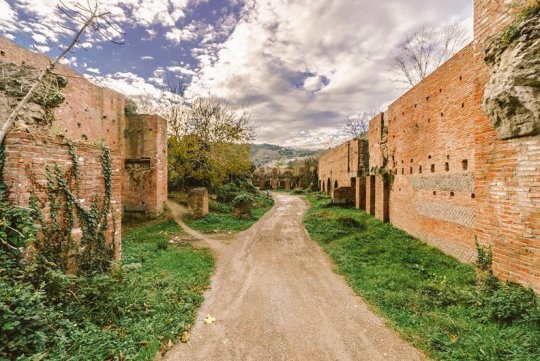
#Ancient Roman Marble Statue Depicting a Nymph Found in Turkey#ancient city of Amastris#marble#marble statue#ancient artifacts#archeology#archeolgst#history#history news#ancient history#ancient culture#ancient civilizations#roman history#roman empire#roman art
176 notes
·
View notes
Text
According to Pausanias the Phoenicians claimed that the god Asclepius was just born from Apollo directly with nobody else involved. In most versions Asclepius was the son of the mortal princess Coronis and Apollo.
Usually there's some form of explanation about how this sort of thing happens. Pausanias was talking about an argument he had with a guy who got mad at him for having different ideas about how the gods worked than he did though when he talked about where he got this information. That sort of interaction doesn't usually lend itself to calm explanations about the mechanics of god procreation.
76 notes
·
View notes
Text

Taurus Goddess
“To be a Taurus is to always be in love.”
Here's our Taurean goddess with a bull, the constellation of Taurus, her ruling planet of Venus, and her glyph tattoo.
I also added a Zeus tattoo for when Zeus disguised himself as a magnificent bull to abduct Princess Europa and carry her out to sea.
- Mallory Jarrell
Legend of Europa:
According to an ancient Greek myth that tells the story of Zeus, the thunder god fell in love with the daughter of Europa, a Phoenician king. When the girl was walking in a garden, the god appeared before her in the form of a bull. Enchanted by his singing, Europa stepped on the bull's back and found herself in the sea. Zeus carried her to the island of Crete and, transformed into a beautiful young man, possessed her.
11 notes
·
View notes
Text
"Zeus himself, the central character in Hesiod’s Theogony, bears some of the most easily recognizable Northwest Semitic features, in addition to those of the Indo-European Sky God inherited by the Greeks. It is not necessary, therefore, to discuss them at length. It suffices to recall that the Canaanite Storm God Baal and the homologous Greek god share a similar position in the succession of kings in Heaven, as well as the position of the youngest son. They both reign from a palace on a northern mountain (Olympos, Zapanu/Zaphon), and they wield thunder as their distinctive weapon. As with his Near Eastern counterparts, thunder, lightning, and the thunderbolt were the “missiles/shafts of great Zeus.” The position of his sister and principal consort Hera is like that of Anat, Baal’s sister and partner (though not consort). For some, this coupling “violates the incest taboo” in Greek myth but allows Hera to remain an “equal” partner according to her right of birth, as the daughter of Kronos. In Il. 4.59 she is the oldest daughter, in Il. 16.432,18.352 she is called “sister and wife” and in Hesiod Th. 454 she is the youngest daughter of Kronos, exactly as Zeus is the last son.
The list of similarities between Zeus and the different manifestations of the Canaanite god (either Baal or El or Yahweh in the later Hebrew theology) is long and has been the subject of much discussion by classicists, Semitists, and biblical scholars. Perhaps most interesting are the parallels noticeable at the level of their epithets, such as Zeus the “cloud-gatherer” (nephelegereta)or “lightener” (asteropetes), and the frequent characterization of Baal in Ugaritic poetry as the “cloud-rider” (rkb ʿrpt). Other epithets of the Northwest Semitic Storm God Adad (Haddad) are preserved in Akkadian hymns, such as “lord of lightning” or “establisher of clouds.” …
Zeus’ “high-in-the-Sky” position and Sky-nature are reflected in other epithets such as hypatos and hypsistos. At the same time, similar divine epithets meaning “the high one” (eli, elyon, and ram) are very common in Northwest Semitic religious texts, accompanying several principal divinities. For instance, this epithet is used in the Ugaritic epic for Baal, and different forms of the adjective are attested in Aramaic, as well as in the Hebrew Bible accompanying El, Yahweh, and Elohim. … The association of the Storm God in Syro-Palestine with the bull as a symbol of fertility is also present in the various mythological narratives involving Zeus, most clearly in the famous motif of Zeus’ kidnapping the Phoenician princess Europa and carrying her on his back after taking the shape of a bull.
The final fight of Zeus with Typhon (Th. 820-880) has also been compared to the fight between Baal and Yam (the Sea) in the Ugaritic Baal Cycle and to that between Demarous and Pontos (the Sea) in Philon’s Phoenician History (P.E. 1.10.28). As mentioned earlier, the Storm God’s struggle with a monster also (albeit more distantly) resembles the clash between the Hurrian Weather God Teshub and the monsters Ullikummi, Illuyanka, and Hedammu. The figure of Typhon in Hesiod can in fact be seen as a Greek version of a “cosmic rebel” repeatedly reimagined with different characteristics in the specific versions, who endangers the Weather God’s power and generally has both marine and chthonic features. The Levantine and Greek adversaries probably have more than a merely thematic resonance, as the very name of Typhon might have a Semitic origin. It has hypothetically but quite convincingly been associated with the Semitic name Zaphon. Mount Zaphon (Ugaritic Zapunu or Zapanu) is a central point of reference in the geography and the religion of Ugarit. Known by Greeks and Romans as Kasion oros/ mons Casius (today Jebel al-Aqra), this peak on the north coast of Syria (south of the Orontes River) was also mentioned in Hurrian-Hittite myths. The mountain occupies a central spot in both the fight between Ullikummi and Teshub (as Mount Hazzi) and in the Ugaritic Baal Cycle. In the Ugaritic epic, the fight against Yam (the Sea) is not described as taking place on the mountain, but the celebration of Baal’s victory is, as it is the god’s abode overlooking the Mediterranean: “With sweet voice the hero sings / over Baalu on the summit / of Sapan (= Zaphon).” Much later, Apollodoros locates the cosmic fight with Typhon on Mons Casius precisely, which indicates that the link between Typhon and Zaphon had persisted, even though the name known to Hellenistic authors was the Greek, not the Semitic one."
- When the Gods Were Born: Greek Cosmogonies and the Near East by Carolina López-Ruiz
10 notes
·
View notes
Text
The bull and its symbolism in ancient times (part one)
Much is connected with such an animal as a bull. Especially if we are talking about antiquity. The first thing that comes to mind is, of course, the island of Crete and the labyrinth with the terrible monster Minotaur. Or the rituals in which bulls were sacrificed are remembered. But I want to touch on other topics that are also related to the bull.

This is a fresco found in the palace of Knossos. Dated to the 1st half of the 15th century. BC e.
It depicts two young girls (presumably priestesses) and a young man jumping over a bull.
This is taurocatapsia. Ritual jumps of acrobats, during the movement of the bull. Apparently, the ritual of "playing with bulls" was a religious ritual that served as an integral part of the Cretan cult of the bull.

Signet depicting taurocatapsia
Something like a more complicated and impossible version of bullfighting. And in modern bullfighting, the bull is killed, not played with. Experienced theodores argue that such a game with a bull is impossible, even for the most experienced acrobats.

The sequence of performing taurocatapsy
Indirect confirmation of their words are the cemeteries of the Minoan times, where many remains of young people who were seriously injured are found in burials. Dangerous game existed in reality, it's a fact But how many managed to survive? And what was it for?
Similar images are found both in the territory of Western Asia and in Egypt. Their age reaches 5-6 millennium BC, which allows us to confidently associate them with the astrological era of Taurus, during which the main deity always appeared in the form of a bull.
The oldest texts of the Minoan civilization have not been deciphered, and we do not know what name the main god had. But in what form he appeared to the Minoans, it is known for sure. Zeus appeared in the form of a bull to the Phoenician princess Europe and took her to Crete. There, in Crete, Poseidon sent King Minos and his brothers a beautiful white bull - the future father of the mysterious Minotaur.
Could there be a symbolic meaning that man was playing a dangerous game with God? And can you win?

Taurocathapsia, bronze statuette, Crete.
Unfortunately, there are no answers to these questions. Too much time has passed and the intended meaning for us is lost.
Perhaps it was a sacrifice. The stunt acrobat tried to show his exaltation and closeness to god in this competition of death. But whether this was the case is not known for certain.
10 notes
·
View notes
Text


Psyche: A beauty beyond compare, Psyche's lot in life was to be married to a beast even the gods fear -- Eros picked her up from where she was stranded and made her his wife. Overcome by curiosity, she nearly lost him, but after several Disney Princess-esque shenanigans and a quite frankly unhealthy amount of suicidal ideation, Psyche reunited with her divine husband, became a goddess in her own right, and named an entire field of science.
Cadmus: Originally from Phoenicia or Egypt or somewhere else entirely, Cadmus is credited with bringing the Phoenician alphabet to Greece and giving them their first writing system. He founded the city of Thebes by sowing the teeth of Ares's cool and fun dragon, an action that was both necessary and haunted him for the rest of his life until he and his wife were turned into snakes. Also, he's Europa's brother!
28 notes
·
View notes
Text
She walks for hours, carrying him in her arms. He is a curious child. She shows him flowers, takes each petal and holds it to his face. Crocuses, laurel, lilies, anemones. She tells him stories about them. The Phoenician princess Europa was lured into Zeus's arms when he breathed a crocus from his mouth; the nymph Daphne turned into a laurel tree to hide from Apollo, who desired her; the goddess Persephone was abducted by Hades, king of the underworld, while picking lilies in a meadow. The baby likes the anemones most, so Clytemnestra tells him of Adonis slain by a boar and Aphrodite who loved him.
From Clytemnestra by Costanza Casati
#the foreshadowing in this section is devastating#quote of the day#literature#costanza casati#clytemnestra
5 notes
·
View notes
Text
you got your known Minoans and your unknown Minoans (part three)
(reposted, with edits, from Twitter)
(part one, part two on Tumblr)
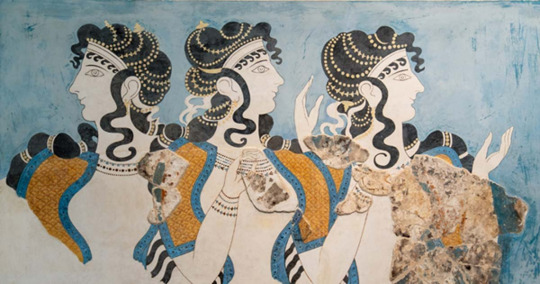
So, in Part One of this I talked about the Boston Goddess and how she’s probably a forgery, and in Part Two I talked about Arthur Evans and how much of a prat he was.
Now onto how we got a “Minoan” civilization.
"Minoan" refers to the idea that Crete was led by King Minos, who ruled a mighty maritime empire from the island. He's mentioned by Thucydides and Herodotus, and IIRC, there's been stuff found in Mesopotamian ruins made with materials that may have come from Crete. (A reference in the Tanakh supports the idea that trade--and battle--with Cretans was going on for a long time.) So it's likely that the ancient Cretans, during the period that we now call "Minoan," were part of an active, interconnected Mediterranean society that stretched from Persia to Greece, that they were a powerful maritime culture, and even possibly had a king named Minos.
(Irony sidebar: in all of this Victorian rush to prove the superiority of European culture over that of the ancient Near East and Africa, they're lionizing a dude who's the son of Europa, a Phoenician (Canaanite) princess. Like, the very NAME comes from a Middle Eastern woman.)
So anyway, because Diodoros distinguished between two different kings named Minos, Arthur Evans decided that "Minos" was actually a title like "Pharaoh" rather than a name (because that's... way more likely than being named for a great-grandparent?). Thus, "Minoan" could be used to refer to the culture of Bronze Age Crete. Voila. The Minoans.
And, okay: We had to call them something, and we don't know what they called themselves because they left behind no writing that we can read.
We might, however, have tried our best to call them whatever they called themselves, or at least what their contemporaries called their culture, which according to Egyptian and Neo-Assyrian records was probably Keftiu or Kaptara. I guess a British guy needed to name them?
Rule Britann--I Mean, Minoannia
Anyway, Evans had a model in mind for his attempts to reconstruct this society, and that model was another "benevolent" island empire: the British Empire and its ruler, Queen Victoria. With some flourishes from Egypt and Mesopotamia, of course.
He definitely had a very specific project in his fascination with the area, and that was to prove that ancient Europeans were as literate as their Near Eastern/African contemporaries. So he was on the hunt for script, carved gemstones with "alphabetic"-looking symbols, anything.
Now, I dunno, it might be worth stepping back for a moment here and asking WHY this particular signifier was so important. Our entire conception of what makes a "sophisticated" or "important" society is largely based on what records they leave behind. And we tend to focus on writing because the modern West is a very writing-centered culture. But cultures that don't center writing aren't necessarily less sophisticated (and we might even question what we mean by "sophistication"). They're definitely not objectively "better." They're just easier for us to understand, because unless their descendants are still maintaining those oral traditions, we don't know what they are.
The Best Tablet Is a Tabula Rasa
The Minoans did employ a writing system, of course, but it hasn't been deciphered. So all we really can know about them comes from their art, architecture, objects, etc. They can't talk to us the way, say, the Sumerians can.
Ironically, despite Arthur Evans' obsession with using the Minoans to prove ancient European literacy, it ended up being far more convenient for him (and other Victorians of his mindset generally) that they didn't have any writings we could read.
Blank slate.
He could make them into whatever he needed them to be, because there weren’t any of their own words around (that we can decipher) to contradict him.
So anyway, giant palace at Knossos, CLEARLY King Minos's palace. Evans found some inscribed tablets there and decided they must be the Law of Minos. Evans declared Minos "another Moses or Hammurabi, receiving the law from the hands of the divinity himself..."
They were deciphered after his death, and turned out to most likely be Mycenaean, not Minoan. They were also inventory lists, not laws.
He found a big chair, called it the "Throne of Ariadne," but later changed his mind and decided it was the seat of a priest-king, and declared it "the oldest throne in Europe."
He wrote volumes about how (in Lapatin's words) it was a "peaceful European island nation, led by an enlightened aristocracy, ruling a maritime empire and producing sophisticated, refined artworks." You know, like England, or at least England in the minds of the English.
He compared it to Florence under the Medici, to the princely establishments of Germany, to places in France. And of course, everyone else took up that note. The figure in this fresco was dubbed La Parisienne.
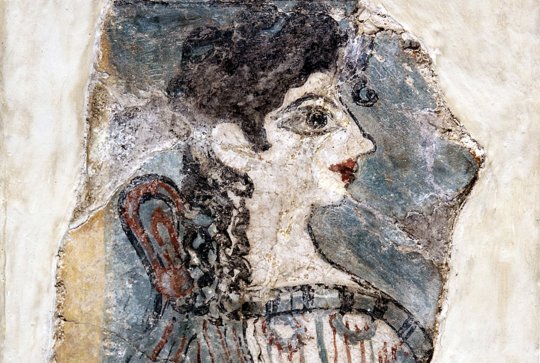
Image: La Parisienne, who looks Parisian, I guess.
And Evans wrote "there has come into view a primitive European civilization, the earliest phase of which goes back even beyond the days of the First Dynasty of Egypt." Hor-Aha took the throne around 3100 BCE, but okay, I guess?
So anyway, Evans believed that the Minoans were superior to their successors, and to the Mycenaeans of the Greek mainland, who he characterized as completely dependent on the Minoans. Citation needed, as we poor unenlightened Internetters would say.
I Promised You Isadora Duncan Being Insufferable, Didn’t I?
But of course ancient Greece was all the rage, from Leighton's paintings of Greek ladies chatting to Isadora Duncan and Nijinsky bringing classical influences into dance.

Image: Leighton painting of very blonde ancient Greek women.
And the Minoan art style was so pleasingly modern! Like Art Noveau! Put a pin in that. We’re coming back to it.
So anyway, Isadora Duncan.
She showed up at Knossos, where, upon seeing the Grand Staircase, she "could not contain herself and threw herself into one of her impromptu dances." She sounds utterly insufferable, no?

Image: Isadora Duncan, when no one actually asked her to dance, probably.
Her whole thing was being scared of ragtime because Black people (I'm not making this up). Like, she was Henry Ford and square dancing before Henry Ford and square dancing, so it’s probably not a huge surprise that she was all over “archaeology” “proving” the superiority of white people.
Pretty sure what everyone ACTUALLY liked about her was her costumes, but I digress again.
The Nice Thing About Gaps Is You Can Fill Them With Anything You Want
Back to the art.
So cool, right? Looks almost modern! Almost Art Nouveau.
Interesting how these ancient frescos happen to have an art style that looks so much like an art style that just happened to be popular when they were discovered.
Almost Erté-like, you could say:

Or maybe a little bit Harry Clarke?

Just a bit?

I’m just saying:

What if I told you we really had no idea what that fresco looked like?
The thing is, there was barely any of it left:

You can see the fragments that were left in the above image (and even those are “restored”). There wasn’t much to work with.
Evans brought in Émile Gilliéron, or rather, the Émile Gilliérons, a father-son team with the same names, to restore the fresco, working from earlier “restorations.”
The guys did beautiful paintings, no argument there:

The only problem is that these “restorations” were used to better understand Minoan culture and, like, this fresco (known as the “Saffron Gatherer” was actually of a monkey?

Yeah, turns out, based on art from other nearby areas, saffron gathering was done by women and leashed monkeys, not boys.
The Émiles may also have straight-up forged a bunch of artifacts there, according to Lapatin.
So anyway, Arthur Evans wanted to find a European civilization that was more ancient and sophisticated than the ones in the East, and he just happened to find one that couldn’t speak for itself, and just happened to have art that proved its “sophistication” by looking familiar and modern, but just exotic enough to feel like it might be ancient.
Part Four: Evans Worldbuilds a Matriarchal Religion (but don’t worry, it was just an “inferior” stage of development before patriarchy)
#archaeology#minoans#arthur evans#crete#white supremacist archaeology#snake goddess#art forgery#blue ladies fresco#minoan art#isadora duncan#minoan
31 notes
·
View notes
Text
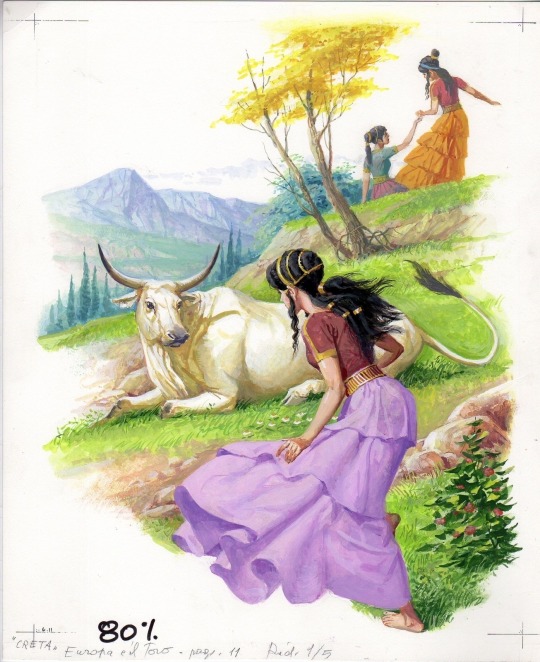
"Creta" Crete. Europa e il Toro | Europa and the Bull
#europa#crete#creta#bull#zeus#art#greek mythology#europe#mythology#mythological#european#history#cretan#story#phoenician#princess#abduction#antiquity#ancient#tales#folklore#folk tales#love#ancient greek#ancient greece#gods#religion#illustration#greece#mediterranean
119 notes
·
View notes
Text
Ancient Woman Thunderdome 2023
Round 1 Match 6: Callisto vs. Europa!
The rules: Vote based on who would win in a fight, NOT who you like more. Consider factors such as physical prowess, intelligence or cunning, and magical ability.
If the character has multiple non-godly forms, consider the one you believe to be more powerful. If the character is a goddess for a portion of their life, please only consider their mortal or non-godly form.
The fighters:
Fighter: Callisto
Source(s): Various mythological sources, Ovid's Metamorphoses
Bio: Callisto was one of Artemis's nymphs, which meant she had sworn to never get with a man. Unfortunately, Zeus didn't care about that kind of thing, and got her pregnant (whether or not this was consensual varies by source). Sources disagree on who exactly turned her into a bear and why (Artemis did it out of anger at finding her pregnant, or Hera did it out of jealousy...), but everyone agrees that she she turned into a bear and had a child, not necessarily in that order. Sources also disagree on whether it was her son or Artemis who nearly killed her, but it doesn't matter, because Zeus put both her and her son into the sky as Ursa Major and Ursa Minor.
Fighter: Europa
Source(s): Herodotus's Histories, Ovid's Metamorphoses, various other mythological sources
Bio: Europa was a Phoenician princess. Zeus turned into a bull to seduce her; Europa climbed onto his back, and he took her away to Crete before revealing his true identity.
13 notes
·
View notes
Text
Lucia daughter of the Phoenician
Lucia daughter of the Phoenician
Class: Bard
Species: Half Siren
Alignment: True Neutral? (Unsure because she does eat people)
Fulgrim's little princess, when he found out she existed he made sure that she knew that he loved her and was not there as a simple fuck.
This allowed her to explore her "human" half as she only being a half siren never fit fully in with the rest of the harem (I've decided a group of sirens is called a harem even if it is a mixed sex group) even if she was the matron's child
He took her away and taught her so much culture and doted upon her in the sense of her studies.
She never got the same level of perfectionism as her father as she she would more often see the imperfection just as a manifestation of her personal style
She would dress up in dresses and skirts and just be an adorable little girl but once she hit puberty is when her sirenic nature took hold
Her coming of age ceremony for the harem was her seducing a sailor and dragging him to the depths to eat which she did but suddenly everyone was noticing her
Fulgrim unabashedly has had to kill a few men and women who got too interested in his daughter even if she tried not to seduce them. Often it was just her natural beauty
So how Lucia negates her siren passive nature is by having a far more "grunge" style. A top that has a tall neck that covers her mouth or she uses a scarf, her hair is oily and lays limply around her face. She wears baggy clothes that hide her form.
She has the same musical tastes as Sigismund in that if it was in terms of modern music it would be more powermetal, alt rock, and some pop.
However her clothes are easy to remove and all she has to do is get her hair wet and flip it back and suddenly you have a siren and this is when you can see she is Fulgrim's child. Of course everyone is far too distracted by her body and her voice to notice how dark her eyes are when she is singing like a siren or how sharp her nails and teeth are.
Personality wise she is rather laidback
Her eyes when she is not utilizing her abilities are a gold color with cat eye slits and her hair is pure white, she is quite pale so even if her clothes are baggy they tend to be colorful
Her main weapon besides her instruments, which she would totally add a blade to the side of her instrument to cave someone's head in, is her teeth and claws.
2 notes
·
View notes
Photo

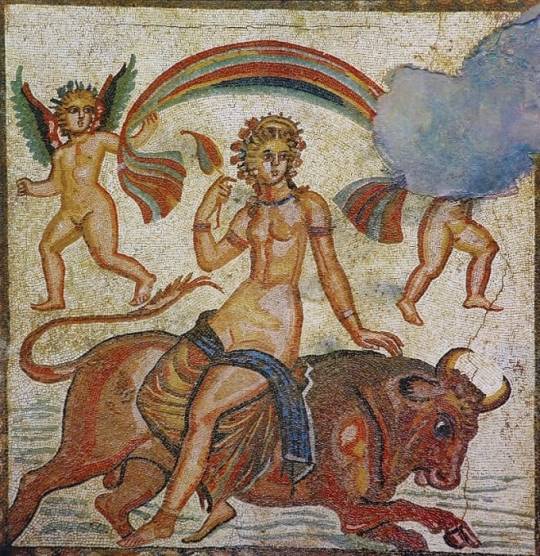
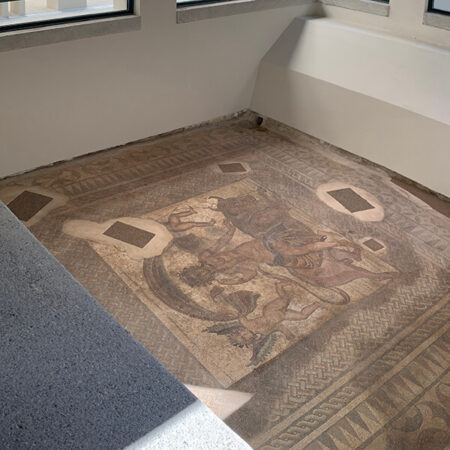
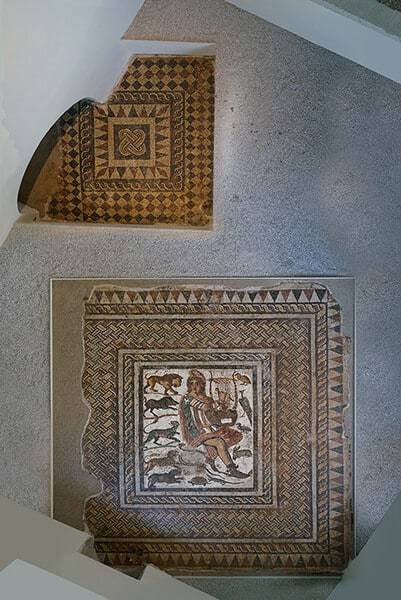

Stunning Ancient Mosaics Adorn New Museum in Sparta, Greece
Two rare Roman floor mosaics discovered in Greece will feature in a new museum in Sparta which officially opens on November 21st.
The Abduction of Europa and Orpheus with the Animals mosaics were accidentally discovered in the late 19th century on private property.
The two mosaics discovered in 1872 and 1877 are from the end of the 3rd century AD and the start of the 4th century AD.
Mosaics in Greece fell to obscurity
Until now, the mosaics had no permanent home. One was left in a private garden while the other was placed in a wine storage space. The property was bought by the state, and a shelter was erected over them after which the mosaics fell to obscurity.
Researchers believe the two mosaics were part of the decoration of a bath complex. Possibly, the bath infrastructure and mosaics were part of a rich Roman house or two neighboring ones.
Both are distinguished for their composition, rich colors, and craftsmanship.
The 2.05 x 1.98 meter mosaic with the representation of the Abduction of Europa is the central theme of a larger mosaic floor. The woman is depicted sitting on the back of a bull, the form taken by Zeus, in motion towards the right while two winged cupids frame the figure.
With the introduction of the euro as the common European currency on January 1, 2002, Greece chose the representation of the Abduction of Europa in the Sparta mosaic as the motif for the two-euro coin, designed by Giorgos Stamatopoulos.
Orpheus is a Thracian bard, legendary musician, and prophet in ancient Greek religion. He was also a renowned poet and, according to the legend, traveled with Jason and the Argonauts in search of the Golden Fleece. He even descended into the Underworld of Hades to get his lost wife, Eurydice, back.
Mosaics discovered in Greece tell the story of Europa and Zeus
In Greek mythology, Europa was a Phoenician princess of Argive Greek origin and the mother of King Minos of Crete. The continent of Europe is named after her.
Zeus, the king of the Olympian Gods, transformed into a beautiful white bull to abduct her. The story of Europa is one of the most famous tales of love and lust between the gods.
Zeus was not only known for being the most prominent deity in the ancient Greek pantheon. He also had a reputation for endless love affairs.
Europa was picking flowers with her helpers when she suddenly saw the bull approaching from afar. The princess was astonished by the beauty of the animal. As they neared each other, he quickly leaned down at Europa’s feet in an act of utter submission to her. Encouraged by her helpers, she climbed on the animal’s back.
Zeus got up and slowly started walking around. Soon, however, he accelerated his pace and eventually broke into a gallop, with Europa clinging on for her life. The king of the gods and the frightened princess reached the seaside and dived into the sea.
Zeus had carried Europa from Phoenicia to Crete. Once they got to the island, Zeus reclaimed his human form and finally materialized his lust by mating with her under an evergreen tree.
Europa’s earliest literary reference is in the Iliad, which is most likely from the 8th century BC. Another early reference to her is in a fragment of the Hesiodic Catalogue of Women, discovered at Oxyrhynchus. The earliest vase-painting securely identifiable as Europa dates back to the mid-seventh century BC.
By Tasos Kokkinidis.
#mosaics#Ancient Greek mosaics#Stunning Ancient Mosaics Adorn New Museum in Sparta Greece#archeology#archeolgst#ancient artifacts#history#history news#ancient history#ancient culture#ancient civilizations#greek history#ancient greece#ancient greek art
33 notes
·
View notes